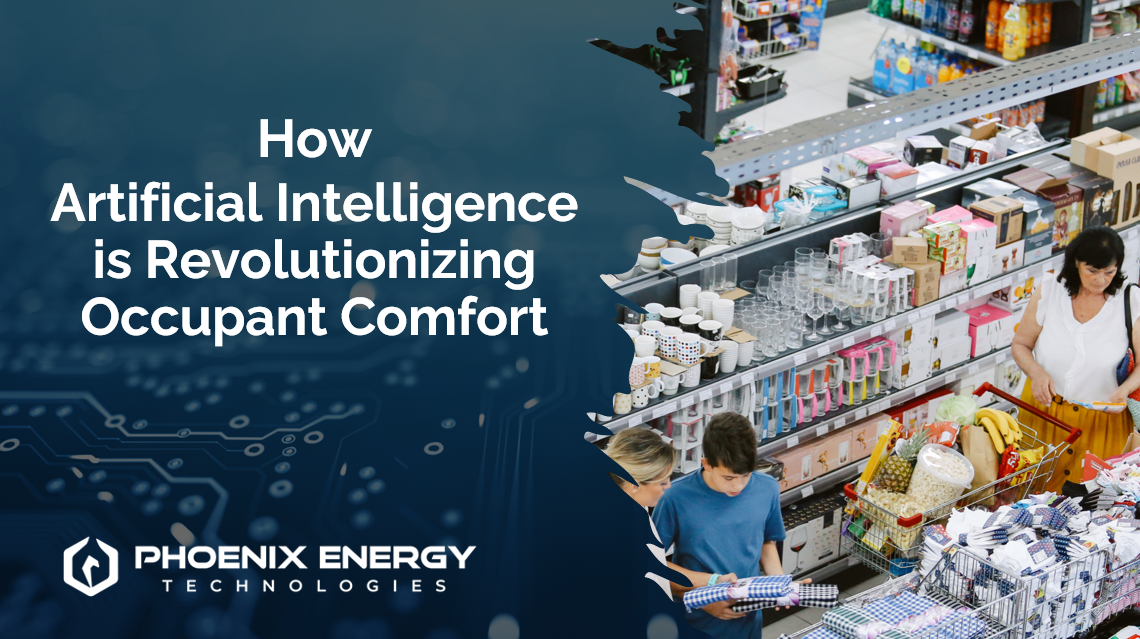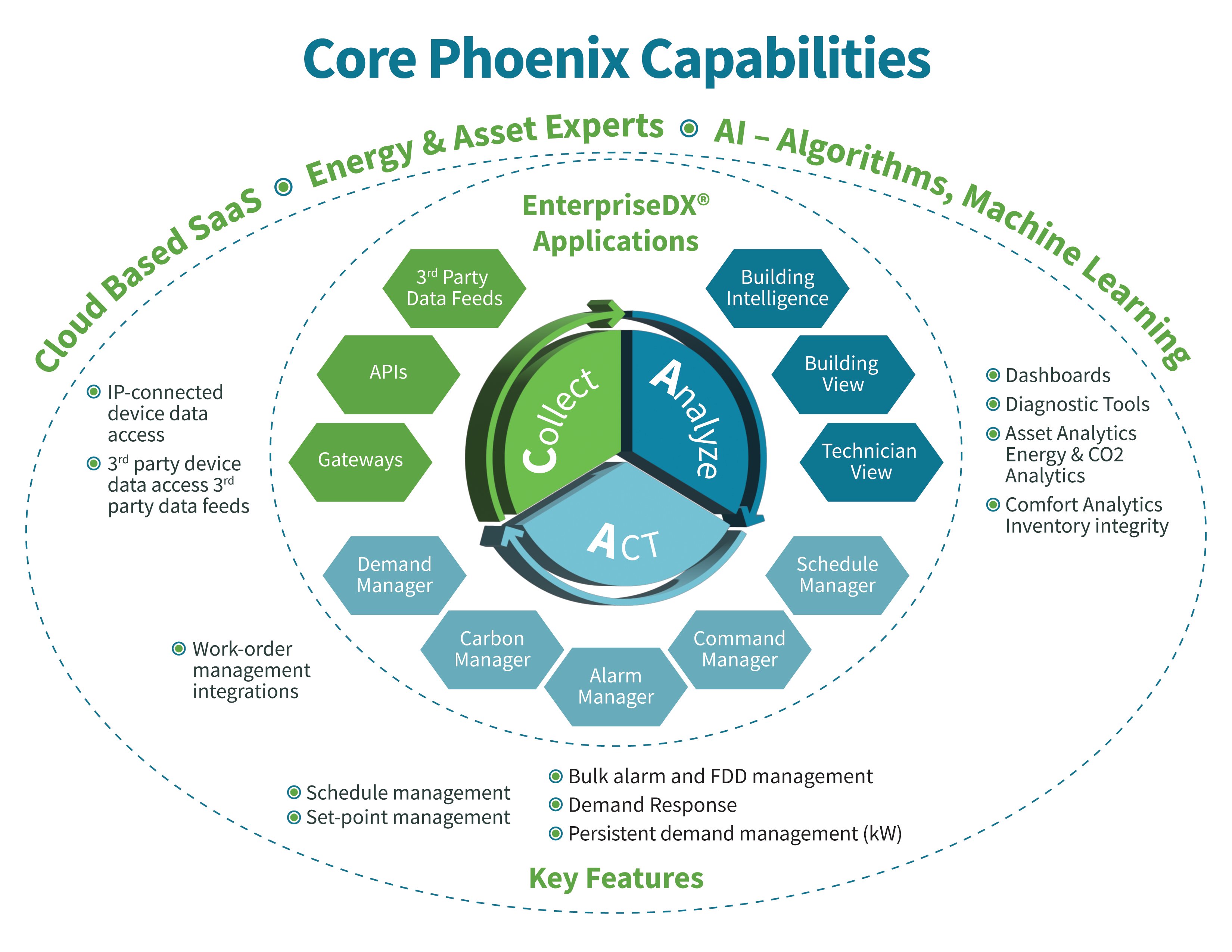Share this
How Artificial Intelligence is Revolutionizing Occupant Comfort
by Christopher Higgins on Sep 19, 2023

The comfort of customers and occupants in commercial buildings is paramount to ensuring a positive experience. One critical aspect of comfort is maintaining optimal indoor temperatures. Artificial Intelligence (AI) has emerged as a powerful tool in achieving this goal. By leveraging AI-driven systems, commercial buildings can create environments that are not only comfortable but also energy-efficient. In this article, we will explore how AI can be employed to enhance customer comfort by maintaining optimal indoor temperatures in commercial buildings.
Predictive Climate Control
Traditional HVAC systems often work on a reactive basis, responding to temperature changes after they occur. AI-powered systems, however, can anticipate temperature fluctuations by analyzing historical data, weather forecasts, and real-time sensor information. This predictive approach allows the HVAC system to make gradual adjustments, ensuring that indoor temperatures remain within a narrow comfort range. By doing so, customers experience consistently comfortable indoor conditions.
Energy Efficiency
AI's ability to optimize HVAC systems goes beyond comfort—it also has a significant impact on energy efficiency. By fine-tuning temperature control, AI can reduce energy consumption and operating costs. For instance, during periods of low occupancy, the system can automatically adjust temperatures to conserve energy without sacrificing comfort. Additionally, AI can be used to take advantage of “free cooling” days by automatically adjusting damper settings to bring in more outside air on cooler days. This not only benefits the environment but also leads to cost savings that can be reinvested in the business.
Remote Monitoring and Control
AI systems can be integrated with building automation platforms, enabling remote monitoring and control of HVAC systems. Building managers and facilities teams can access real-time data and make adjustments from anywhere, ensuring that comfort levels are maintained even when they are off-site. This remote capability enhances the building's operational efficiency and responsiveness to changing conditions.
Fault Detection and Maintenance
Proactive maintenance is crucial for preventing HVAC system breakdowns. AI algorithms can continuously monitor equipment performance, identifying potential issues before they escalate. For example, continuously monitoring the “delta T” and runtime values can help identify declining HVAC efficiency, even if there is no current impact on customer comfort. By detecting faults early, maintenance teams can address them promptly, minimizing disruptions to customers and occupants. This predictive maintenance approach also extends the lifespan of HVAC equipment, reducing long-term operational costs.
Adaptive Learning
AI systems can continuously learn and adapt to changing conditions and occupant behavior. For example, if an AI system observes that a particular area of the building consistently experiences temperature complaints during certain times of the day, it can adjust its control algorithms accordingly. Over time, this adaptive learning process leads to even greater comfort optimization.
Conclusion
In the quest to enhance customer comfort in commercial buildings, AI-driven temperature control systems have emerged as a game-changer. By predicting temperature fluctuations, optimizing energy usage, enabling remote management, detecting faults, and adapting to changing conditions, AI ensures that indoor environments remain consistently comfortable for customers and occupants. Moreover, the energy efficiency gains and cost savings make AI an attractive investment for businesses, contributing to a win-win situation for both comfort and the bottom line. As AI technology continues to evolve, it will play an increasingly vital role in shaping the future of commercial building comfort and sustainability.
Come meet with us and learn more at three upcoming events in October:
FMI, EEI, ConnexFM Mid-Year Conference
Phoenix Energy Technologies has been providing smart building IoT analytics solutions to customers, leveraging our proprietary CAA closed loop framework (collect-analyze-act), for more than 15 years. AI, quite simply, allows us to augment our existing core closed-loop capabilities to be better, faster, more dynamic, and advance towards an autonomous and adaptive closed-loop system.

Learn More!
Leveraging AI - Maintenance Program Options and How to Implement a Predictive Program
Share this
- Facilities Management (91)
- Energy Management (69)
- Company News (49)
- Smart Buildings (37)
- Retail (36)
- Building Management (24)
- Building Automation Systems (21)
- Sustainability (20)
- Energy Demand Management (19)
- EEI (15)
- Adaptive Energy Management (14)
- Grocery (14)
- demand response (14)
- Artificial Intelligence (12)
- Data Integration and Visibility (10)
- HVAC IQ (9)
- COVID-19 (8)
- Customer Spotlight (8)
- Carbon Management (7)
- Setpoints and Temperatures (7)
- Equipment Maintenance (6)
- Operational Efficiency (6)
- Refrigeration Optimization (6)
- Ask Ron (5)
- Asset Manager (5)
- Finance and Procurement (5)
- IoT and Digital Transformation (5)
- Awards (4)
- Comfort (4)
- Energy & Store Development (4)
- Safety and Compliance (4)
- Demand Charge Management (3)
- Energy Management System (3)
- Lifecycle Asset Management (3)
- Premium Services (3)
- Refrigeration IQ (3)
- Automated Demand Response (2)
- ConnexFM (2)
- Customer Service (2)
- HVAC Vendor Management (2)
- Load Shedding (2)
- Technician View (2)
- AIM Act (1)
- ALD (1)
- Analytics (1)
- Data (1)
- Data Integration and Visualization (1)
- EMS (1)
- Knowledge Center (1)
- OSHA (1)
- asset management (1)
- December 2025 (1)
- November 2025 (1)
- October 2025 (2)
- September 2025 (1)
- August 2025 (3)
- July 2025 (1)
- June 2025 (1)
- May 2025 (2)
- March 2025 (2)
- February 2025 (1)
- January 2025 (2)
- December 2024 (2)
- October 2024 (1)
- September 2024 (1)
- August 2024 (2)
- June 2024 (2)
- April 2024 (2)
- March 2024 (2)
- January 2024 (1)
- December 2023 (1)
- October 2023 (2)
- September 2023 (2)
- August 2023 (2)
- July 2023 (1)
- May 2023 (2)
- April 2023 (2)
- March 2023 (3)
- February 2023 (1)
- January 2023 (1)
- December 2022 (1)
- November 2022 (2)
- October 2022 (2)
- September 2022 (1)
- May 2022 (2)
- April 2022 (1)
- March 2022 (3)
- February 2022 (2)
- January 2022 (4)
- December 2021 (2)
- November 2021 (3)
- October 2021 (1)
- September 2021 (3)
- August 2021 (4)
- July 2021 (1)
- June 2021 (2)
- May 2021 (1)
- January 2021 (2)
- December 2020 (2)
- November 2020 (2)
- October 2020 (3)
- September 2020 (4)
- August 2020 (3)
- July 2020 (2)
- June 2020 (3)
- May 2020 (3)
- April 2020 (5)
- March 2020 (5)
- February 2020 (4)
- January 2020 (4)
- December 2019 (4)
- November 2019 (3)
- October 2019 (4)
- September 2019 (5)
- August 2019 (4)
- July 2019 (4)
- May 2019 (2)
- April 2019 (3)
- February 2019 (1)
- December 2018 (1)
- November 2018 (1)
- October 2018 (3)
- September 2018 (3)
- August 2018 (3)
- July 2018 (3)
- June 2018 (3)
- May 2018 (1)
- June 2015 (1)
- March 2013 (1)
- January 2013 (1)
- December 2011 (1)
- October 2011 (1)
- September 2011 (1)

